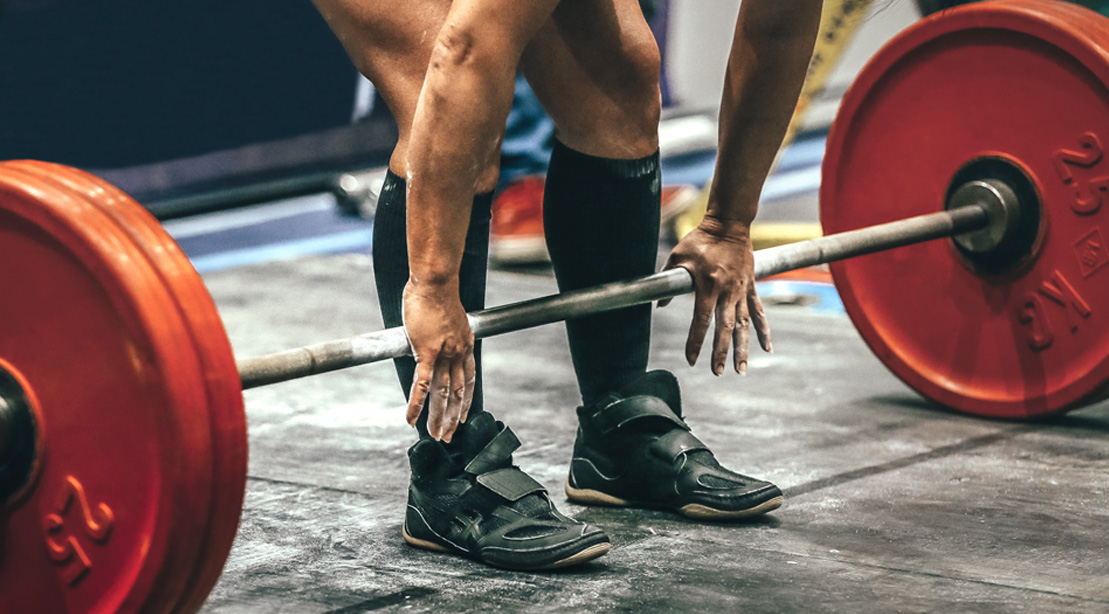28-Days-to-Lean Meal Plan
With the right plan and the right discipline, you can get seriously shredded in just 28 days.
Read article
No one talks about their one rep max for a dumbbell bench press and row. And why would they? Because boosting unilateral strength numbers is unheard of. If you ask a lifter how much they squat, bench, and deadlift, those numbers roll off the tongue. Ask them how long they have been married and their partner’s birthday; they might be stumbling around.
But the big 3 numbers are always at the forefront of the mind.
Unfortunately, some lifters who fall in love with the big 3 tend to neglect unilateral training for a variety of reasons—because it’s more challenging to lift equally as heavy, it’s not the barbell, and it may not be as fantastic and awe-inspiring as a big squat, bench, or deadlift. But that line of thinking is a mistake because you can never get enough strength, whether unilateral or bilateral.
Here, we’ll go into why every powerlifter needs unilateral strength and some big bang-for-your-buck unilateral exercises to improve the performance of your squat, deadlift, and bench. Chris ‘Heavy Metal’ Kershaw, a powerlifting coach extraordinaire from England, shares his expert opinion.
The Big 3 technique is a deep dive down a rabbit hole and an entire set of articles. There is significant variability between lifts due to limb lengths and because we are all put together differently. However, certain Big 3 qualities are nonnegotiable, which are listed below.
Performing unilateral strength will improve muscle development, improve your bilateral barbell lifts, reduce your injury risk, and improve performance. Here are three critical benefits of unilateral lifting for everybody.
Due to bilateral lifting, almost everybody has a dominant and non-dominant side, and when lifting a barbell all the time it masks strength imbalances between sides. This may decrease performance and lead to a higher risk of injury when underneath the bar.
When lifting unilaterally, you automatically throw your body off balance, encouraging your core muscles to engage to keep yourself upright. Think of this as core work without tying yourself in knots.
When you have strengthened imbalances on one side, it only makes sense; when you go back to the barbell, you have the potential to lift heavier and improve bilateral lifting technique and strength numbers.
When moving massive weight, it pays to be prepared, prevent technical glitches, and improve confidence when under or over the barbell. Here, Chris Kershaw gives every powerlifter three good reasons for unilateral strength.
“A misgroove is when you make a technical error ramping up the difficulty or load of a movement. Occasionally, that misgroove can place the burden heavily on one side or the other. It’s necessary to:
This is when heavy single-side work is vital. Here are three unilateral movements I encourage people to load up to build single-sided strength.” explains Kershaw.
“It would be best to have unilateral strength when walking out and then walking back with heavy loads. A dominant walkout often means a dominant squat. Unless your setup is incredibly wrong, you will only use a small range of motion from the knee and hip when you walk a bar out. To specifically train these ranges of motion, we’ll use heavy partial or assisted variations of the split squat.
We will use a little more range of motion than seen in most workouts to make the exercises look more “regular,” as most people prefer. We’ll be going higher reps here as when you walk a squat in, you’ve typically finished a set, so you are fatigued. So, to train this component, we’ll hit you with some disgusting rep ranges.” says Kershaw.
Exercises he uses to work on this are.
“ I am a massive proponent of preparation for adaptation because injuries happen, and one or more of the big three become inaccessible or inadvisable. I believe my lifters should have enough movement variety to be able to bust out split squats, single-leg supported RDL, or single-arm dumbbell push presses without a long learning/ramp-up,” explains Kershaw
Kershaw uses these exercises to improve a powerlifter movement variety are:
Unilateral exercises for powerlifting are for strengthening imbalances, preventing injury, and improving performance. That makes unilateral strength exercises great accessory exercises to be performed after your significant strength movement. Training in a rep range of six to for three to four sets works well for most powerlifters.